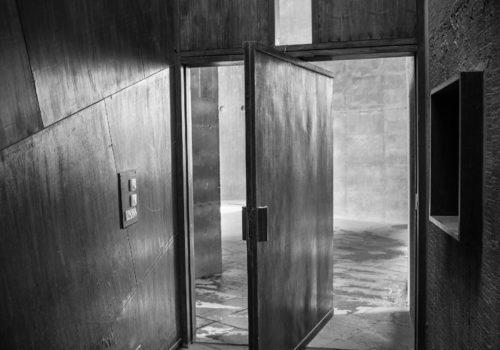An important exhibition has opened at the Government Museum in India since April 18, exactly on the International Day for Monuments and Sites, it will run until June 30, in Chandigarh, the idealized city designed and created by Le Corbusier. It is a photography exhibition, and the author is none other than the French ambassador to Delhi Emmanuel Lenain. What we didn’t know was that it was not the first attempt of Emmanuel Lenain. When he was based in China, Beijing and Shanghai, this genuine amateur of photography has documented with his Leica M6 the daily life and unusual places during his travels and visits, and he would develops himself and print his negatives in the darkroom of his residence. Before leaving China, he assembled his photos of China and published a book: “China, the Great Works”. This series was exhibited and screened at the Maison Européenne de la Photographie in Paris and entered its collection in 2016. After returning to the Quai d’Orsay and having served as diplomatic adviser to the Prime Minister, Emmanuel Lenain was appointed in 2019 ambassador to Delhi. He wasted no time in sizing up this vast country so full of diversity and colors with his camera, always in monochromatic Black and White. There is no coincidence in the world of photography, the same year, in 2019, the most important Indian photographer Raghu Rai (member of Magnum) received the Photography Prize from the Academy of Fine Arts in Paris. The result of the encounter of the two photographers is a crossing of vision and a joint exhibition took place in 2022, accompanied by a book entitled “In India, to Paris”, where each one reveals and shares his singular vision and his own humanist sensitivity towards an “other” culture. .
India happens to be the country where the legendary Le Corbusier carried out his life’s work in Chandigarh, so it is only natural that Emmanuel would be attracted to the beauty and the spirit of the monuments designed by the visionary architect Charles Edouard Jeanneret, known as Le Corbusier, notably in Chandigarh, and in Ahmedabad, works that are still very much “alive and kicking”, as the title of Lenain’s exhibition “tender concrete” suggests. Because the key characteristics of Le Corbusier’s architectural works are based on the use of reinforced concrete. If Emmanuel Lenain has seen and felt the tenderness of concrete, perhaps he meant to express the plasticity of concrete, so remarkable Le Corbusier’s intensive use of sun protection, double-skin roofs, the care given to orientation and openings to facilitate ventilation and aeration, in order to adapt to the local climate, hence the pilings, the long ramps, and the terrace gardens. This tenderness can be found expressed through Emmanuel’s own observations, his angle shots, and the patient search for the “good” light, and his own reflections on the full and the empty, to manage to compose in the end, an abstract art painting à la Mondrian, all in monochromatic Black and White, while inserting his quest for diagonals and ellipses to vary and upset the monotony of straight, vertical or horizontal lines. The dizzying curves when ceilings and stairs merge in three-dimensional apparitions “deja-vu” in Escher’s drawings. And as when penetrating through doors left ajar, the interiors feel like the imaginary spaces and labyrinths of sophisticated video games…
We are hooked and wanting for more…
According to the French Embassy in India: “The exhibition showcases Lenain’s personal and subjective approach to photography, capturing the beauty of concrete architecture. “I am not among those left aghast by Brutalism. Quite the contrary: concrete, when handled by the greatest architects, has always seemed tender to me. It allows for sensual and dizzying curves, the alternation of empty and full, a plunge into solitude and reverie. Concrete allows for a constant, almost musical tension: rectangle contrasts with curve, sharp edges with softened poles, static with fluid, rest with movement. Here and there, buildings of strict verticality and horizontality contrast with the freedom of a curved ramp. And, as is often the case, a certain harmony emerges from opposites,” said Lenain.
Jean Loh
















